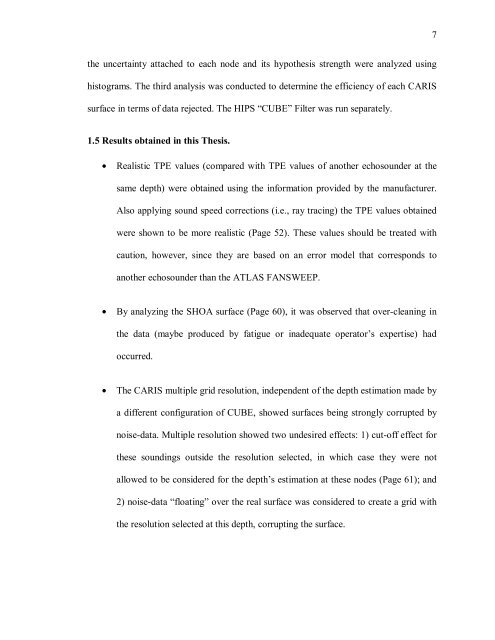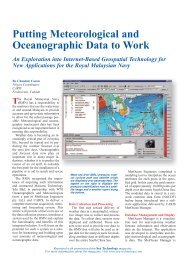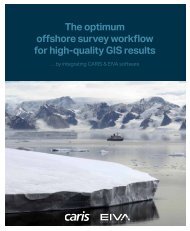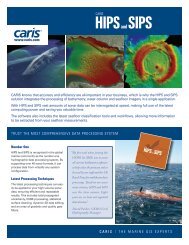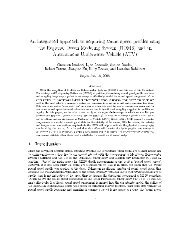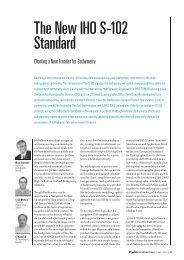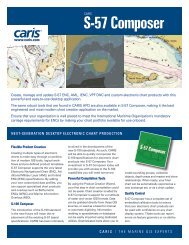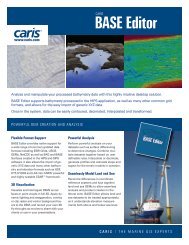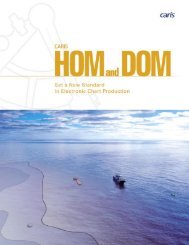Tuning the CARIS implementation of CUBE for Patagonian Waters.pdf
Tuning the CARIS implementation of CUBE for Patagonian Waters.pdf
Tuning the CARIS implementation of CUBE for Patagonian Waters.pdf
Create successful ePaper yourself
Turn your PDF publications into a flip-book with our unique Google optimized e-Paper software.
<strong>the</strong> uncertainty attached to each node and its hypo<strong>the</strong>sis strength were analyzed using<br />
histograms. The third analysis was conducted to determine <strong>the</strong> efficiency <strong>of</strong> each <strong>CARIS</strong><br />
surface in terms <strong>of</strong> data rejected. The HIPS “<strong>CUBE</strong>” Filter was run separately.<br />
1.5 Results obtained in this Thesis.<br />
• Realistic TPE values (compared with TPE values <strong>of</strong> ano<strong>the</strong>r echosounder at <strong>the</strong><br />
same depth) were obtained using <strong>the</strong> in<strong>for</strong>mation provided by <strong>the</strong> manufacturer.<br />
Also applying sound speed corrections (i.e., ray tracing) <strong>the</strong> TPE values obtained<br />
were shown to be more realistic (Page 52). These values should be treated with<br />
caution, however, since <strong>the</strong>y are based on an error model that corresponds to<br />
ano<strong>the</strong>r echosounder than <strong>the</strong> ATLAS FANSWEEP.<br />
• By analyzing <strong>the</strong> SHOA surface (Page 60), it was observed that over-cleaning in<br />
<strong>the</strong> data (maybe produced by fatigue or inadequate operator’s expertise) had<br />
occurred.<br />
• The <strong>CARIS</strong> multiple grid resolution, independent <strong>of</strong> <strong>the</strong> depth estimation made by<br />
a different configuration <strong>of</strong> <strong>CUBE</strong>, showed surfaces being strongly corrupted by<br />
noise-data. Multiple resolution showed two undesired effects: 1) cut-<strong>of</strong>f effect <strong>for</strong><br />
<strong>the</strong>se soundings outside <strong>the</strong> resolution selected, in which case <strong>the</strong>y were not<br />
allowed to be considered <strong>for</strong> <strong>the</strong> depth’s estimation at <strong>the</strong>se nodes (Page 61); and<br />
2) noise-data “floating” over <strong>the</strong> real surface was considered to create a grid with<br />
<strong>the</strong> resolution selected at this depth, corrupting <strong>the</strong> surface.<br />
7


